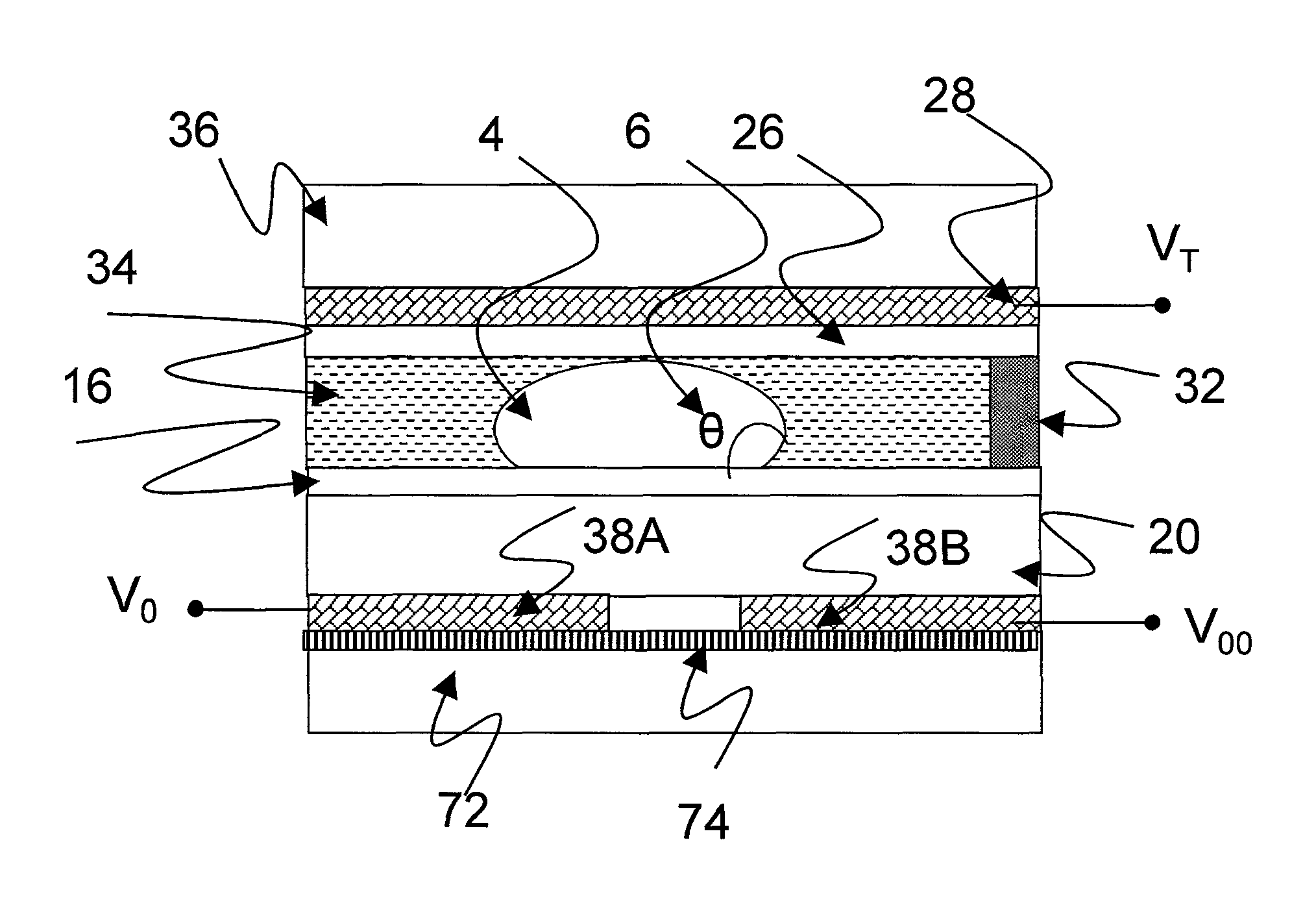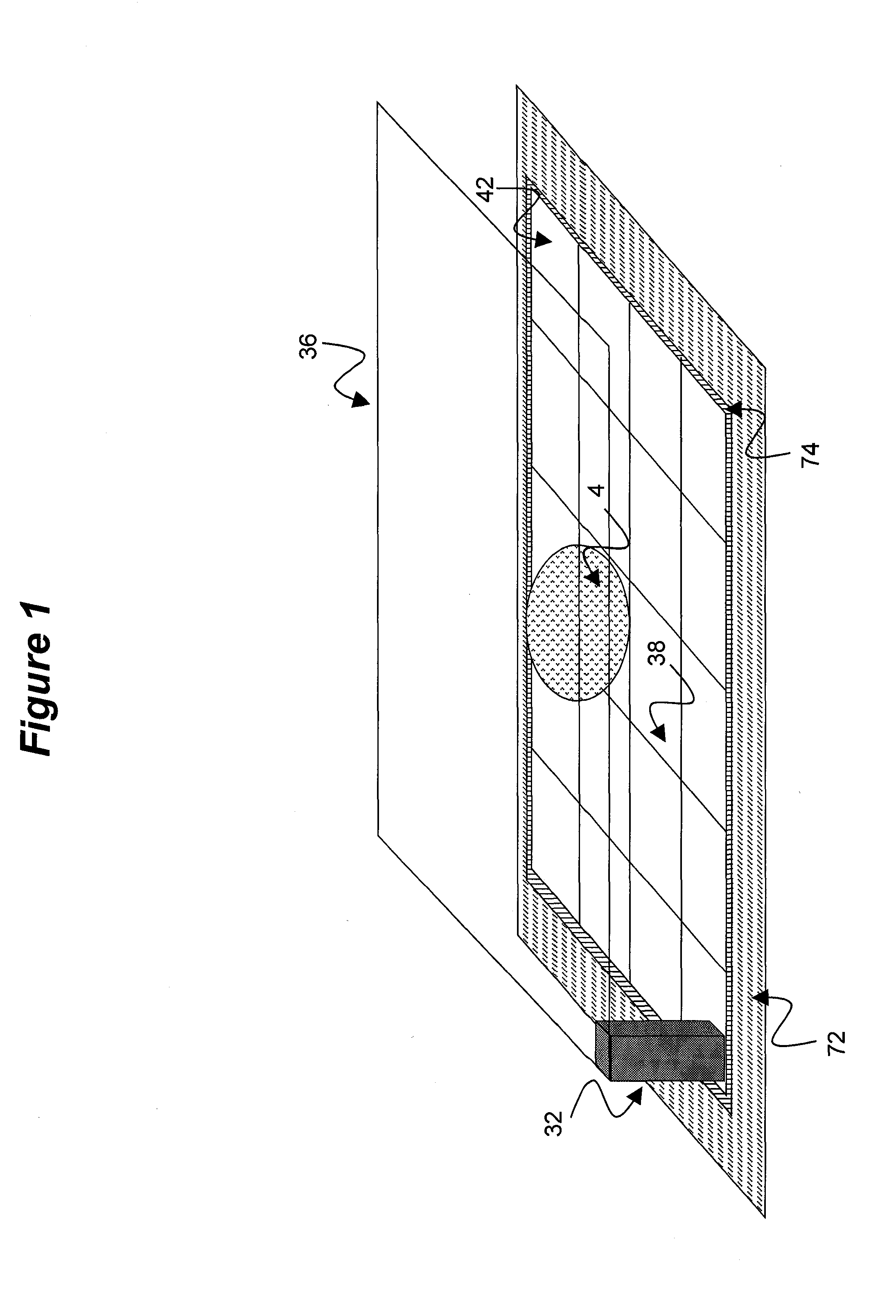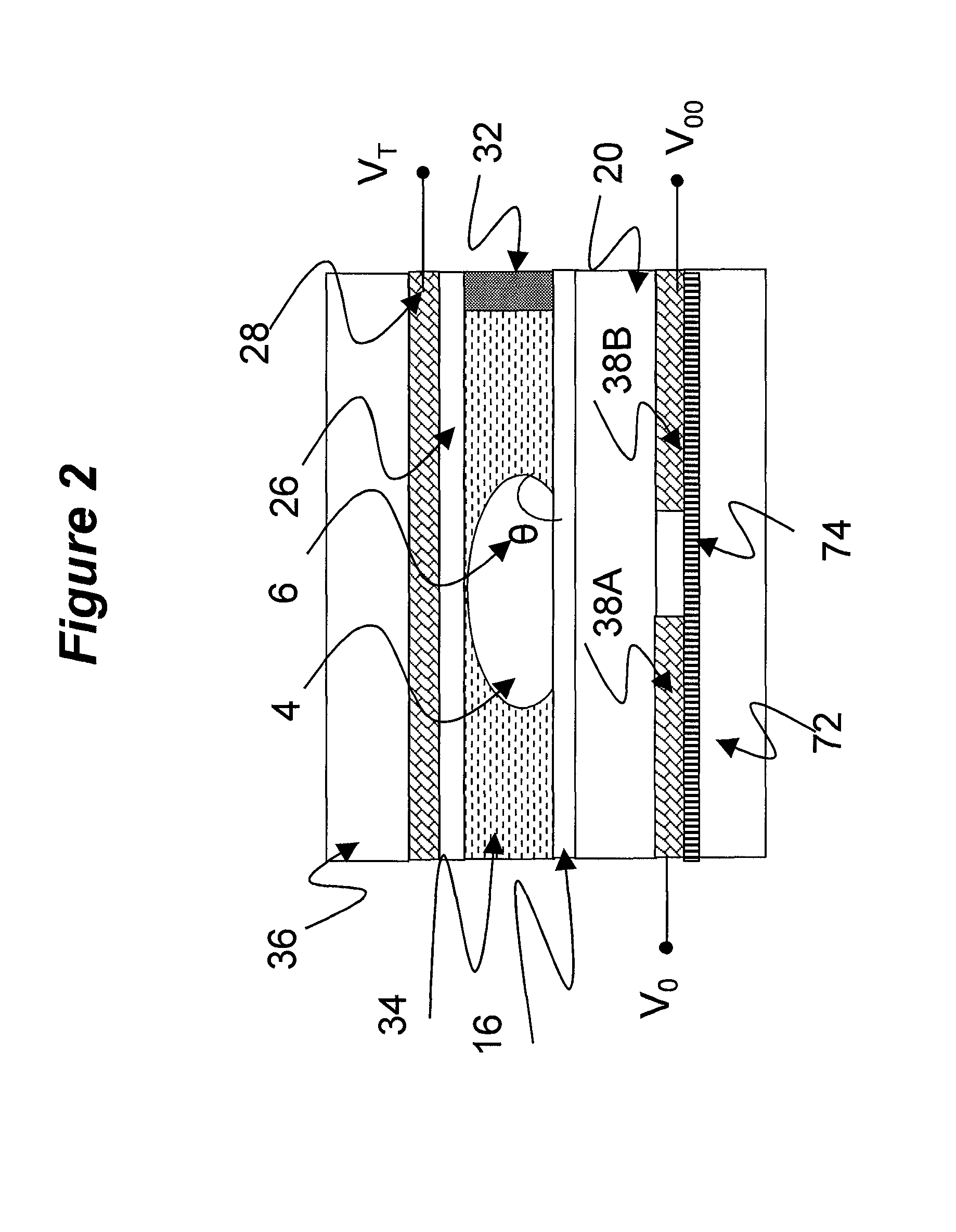Active matrix device and method of driving the same
a technology of active matrix and device, applied in the field of digital microfluidics, can solve the problems of time required, low temperature change rate that can be achieved, and different droplets cannot have different temperatures within the same device at the same time, so as to simplify manufacturing and reduce costs
- Summary
- Abstract
- Description
- Claims
- Application Information
AI Technical Summary
Benefits of technology
Problems solved by technology
Method used
Image
Examples
first embodiment
[0159]A second embodiment of the invention is as the first embodiment, where an alternative array element driver circuit for an array element 84 is used, shown FIG. 11.
[0160]The array element driver circuit according to this embodiment contains the following elements:[0161]A memory function 118 consisting of an SRAM cell and comprising:[0162]A column write line SL (originating from the column driver 78), which may be common to array elements within the same column[0163]A row select line GL (originating from the row driver 76), which may be common to array elements within the same row[0164]An n-type switch transistor 102[0165]A p-type switch transistor 104[0166]A first inverter 106[0167]A second inverter 108[0168]An inversion circuit 120 comprising:[0169]A first analog switch 114[0170]A second analog switch 116[0171]A voltage supply V1, which may be common to all elements within the array[0172]A second voltage V2, which may be common to all elements within the array
[0173]Heater array...
fourth embodiment
[0223]the invention is as any of the previous embodiments where the thin film electronics 74 additionally contains a temperature sensor element 130 as described in prior art. FIG. 18 shows a cross section of the device according to this embodiment. As shown in the figure, the temperature sensor element 130 may in some instances be arranged in close proximity to the second EW drive electrode 38D, for example where it is advantageous to get rapid feedback information from applied heating. In other instances it may be better to locate the temperature sensor further away from the second EW drive electrode 38D or to have a multipliplicty of temperature sensor elements 130 at different distances from the second EW drive electrode in order to determine the temperature profile at different locations within the device. One or more temperature sensor elements 130 may be included at the position of each standard array element 84 and / or heater array element to form an array of temperature senso...
PUM
 Login to view more
Login to view more Abstract
Description
Claims
Application Information
 Login to view more
Login to view more - R&D Engineer
- R&D Manager
- IP Professional
- Industry Leading Data Capabilities
- Powerful AI technology
- Patent DNA Extraction
Browse by: Latest US Patents, China's latest patents, Technical Efficacy Thesaurus, Application Domain, Technology Topic.
© 2024 PatSnap. All rights reserved.Legal|Privacy policy|Modern Slavery Act Transparency Statement|Sitemap



